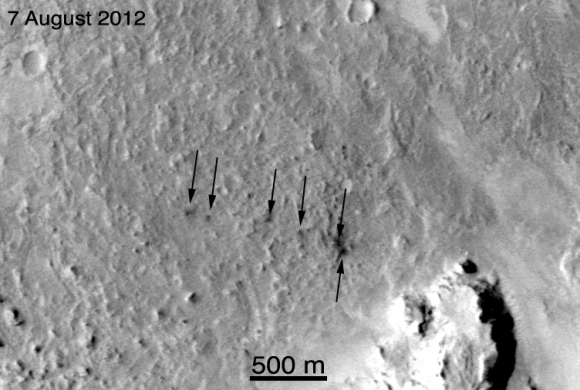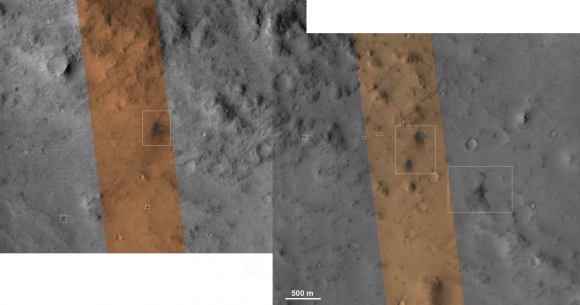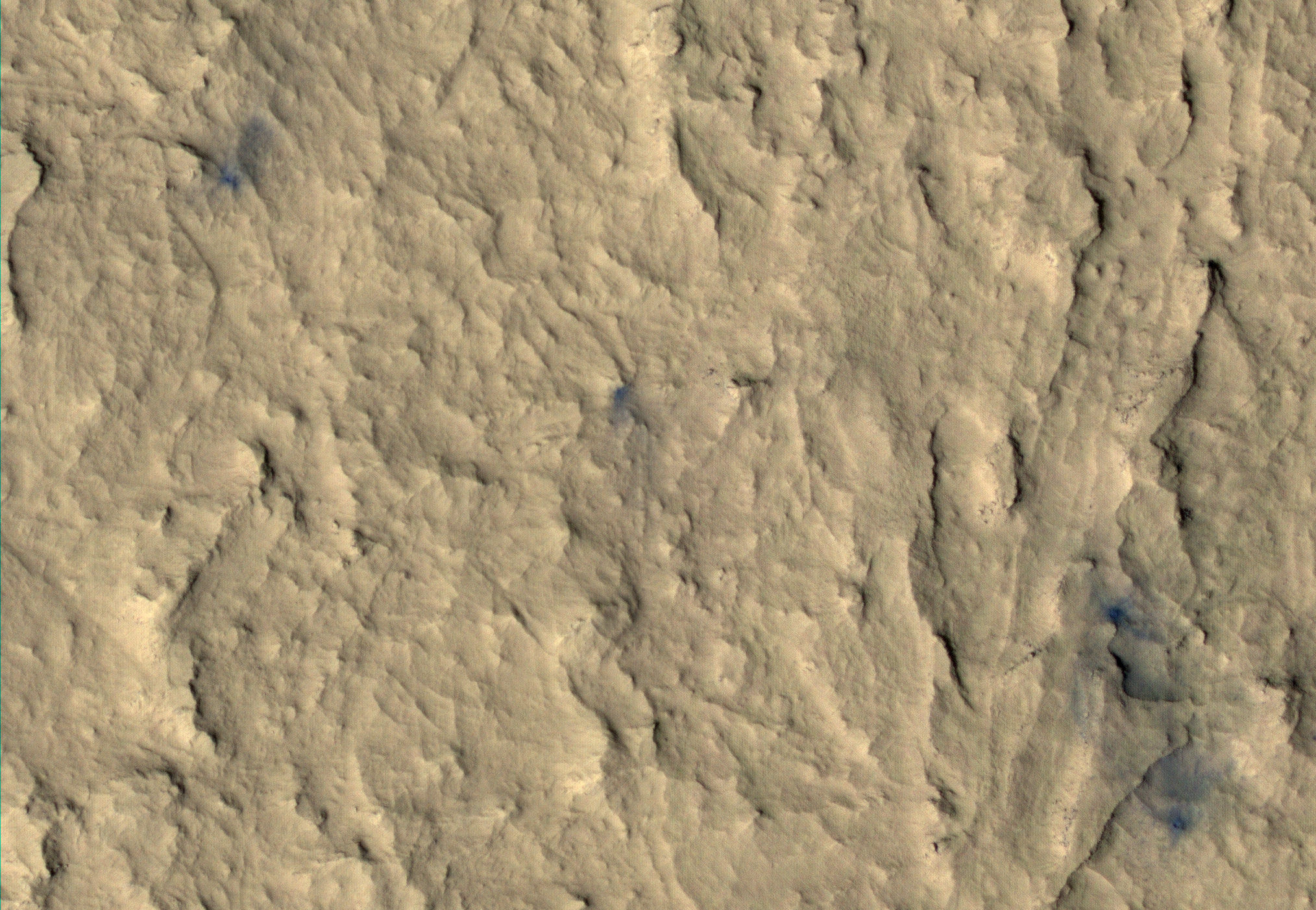During its “seven minutes of terror” landing on August 6, 2012, NASA’s Mars Science Laboratory dropped quite a few things down onto the Martian surface: pieces from the cruise stage, a heat shield, a parachute, the entry capsule’s backshell, a sky crane, one carefully-placed rover (obviously) and also eight tungsten masses — weights used for ballast and orientation during the descent process.
Two 75 kilogram (165 lb) blocks were released near the top of the atmosphere and six 25 kg (55 lb) weights a bit farther down, just before the deployment of the parachute. The image above, an enhanced-color image from the HiRISE camera aboard the Mars Reconnaissance Orbiter, shows the impact craters from four of these smaller tungsten masses in high resolution. This is part of a surface scan acquired on Jan. 29, 2013.
These four craters are part of a chain of six from all the 55 kg weights. See below for context:

Captured by MRO’s Context Camera shortly after the rover landed, the animation above shows the impact site of all six 55 kg masses. These impacted the Martian surface about 12 km (7.5 miles) from the Curiosity rover’s landing site.
A mosaic has been assembled showing potential craters from the larger ballast blocks as well as other, smaller pieces of the cruise stage. Check it out below or download the full 50mb image here.

As Alfred McEwen wrote in his article on the University of Arizona’s HiRISE site: “most of the stuff we sent to Mars crashed on the surface–everything except the Curiosity rover.”


Nasa’a gonna make the Martian Indian cry,,,,,,,,,,
Good that it wasn’t beer cans, plastic bags or hats deposited by Sh_theads… aka baby diapers!
Newsflash! Last Martian killed by falling debris…. Read all about it!
Humor aside… we can do better?
the debris on the surface … it is what it is … this is what was necessary to deliver an operating Curiosity Rover to the surface given budget and time constraints. Pragmatically, who cares what impacted and why? There is a bit more tungsten on mars than before the landing. Perhaps an opportunity for future Martian prospectors.
The black I presume comes from the subsurface. This looks similar to the black material seen emerging from the subsurface due to CO_2 sublimation.
LC
Why were the “Masses” Ballast, made from tungsten? Would not a similar massive substance be as effective? Say Iron? And quite a bit cheaper.
There’s several benefits to using tungsten over lead, notably a savings on volume (tungsten is denser) as well as the fact that it’s environmentally-friendly… perhaps even on Mars! It’s also much more durable than lead.
OK ! I was unaware of that! (especially the density aspect) I guess I need to look at the PTE! Thanks for the response.
S